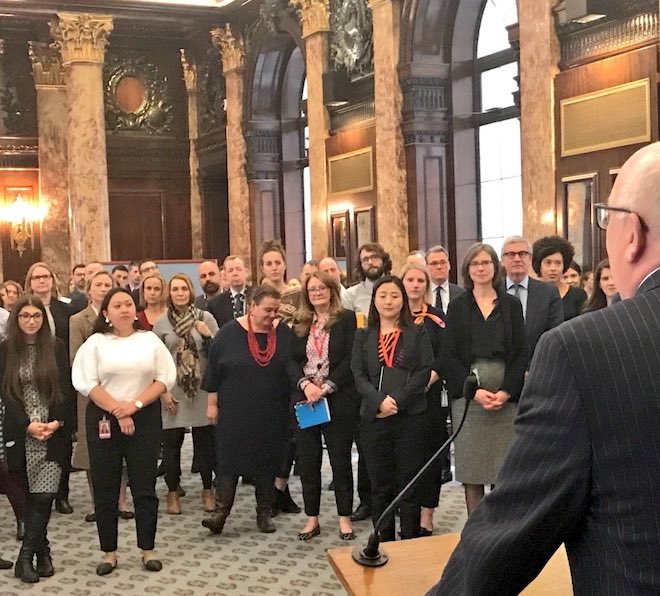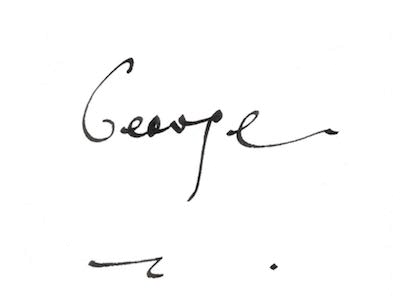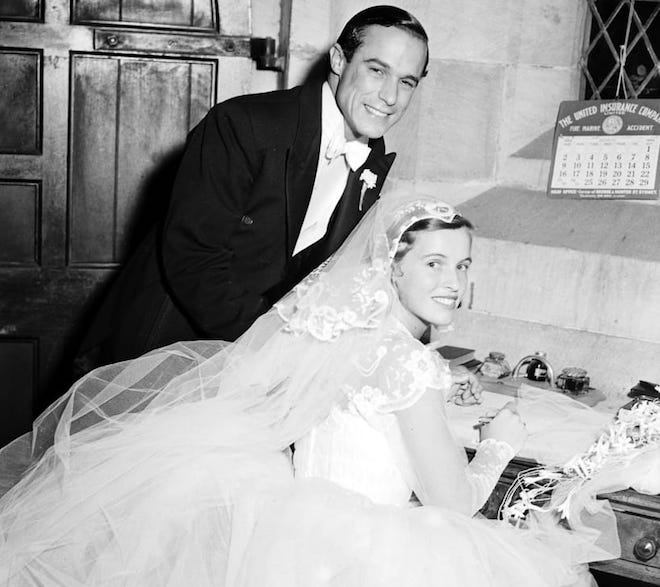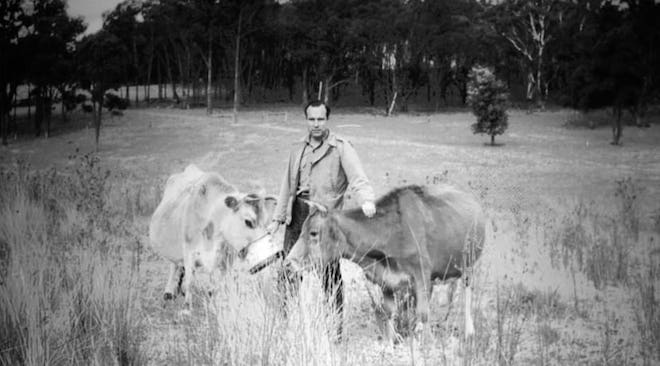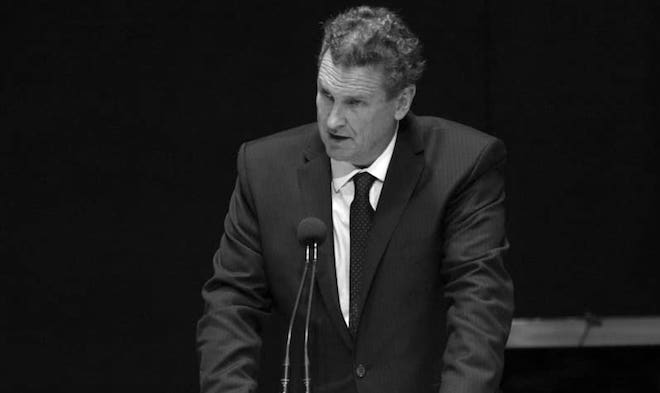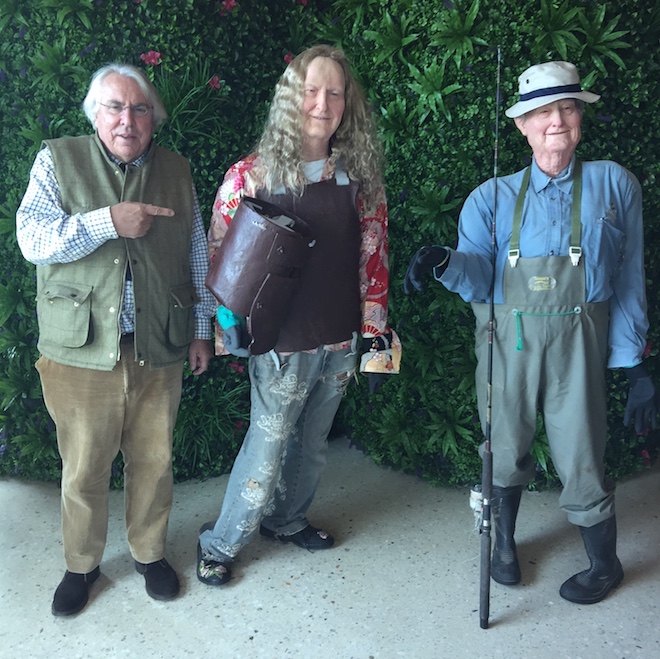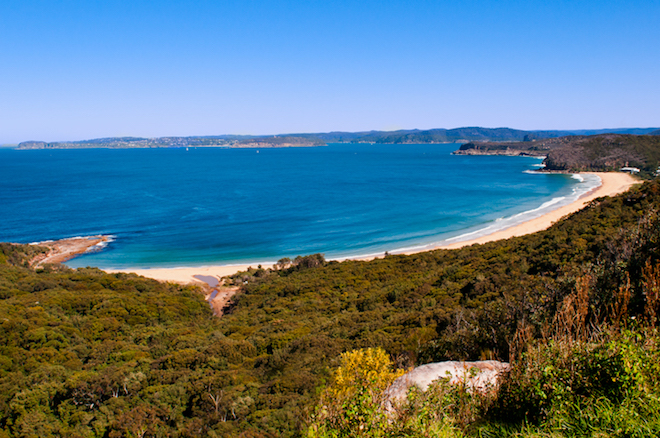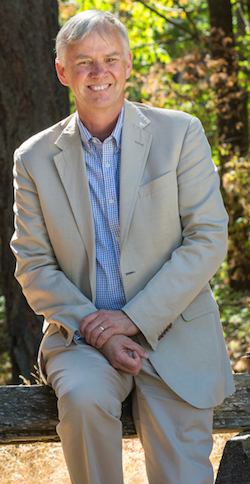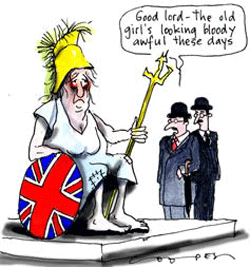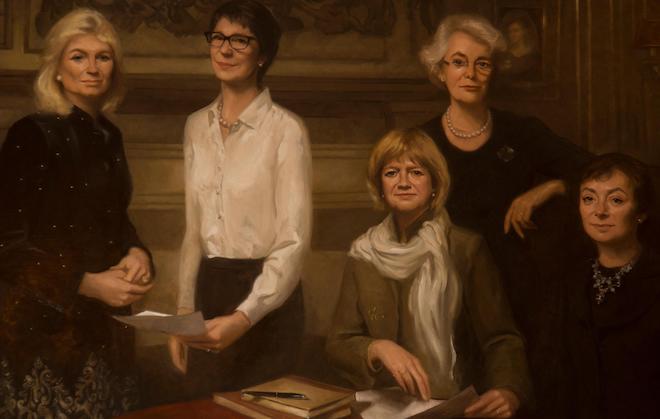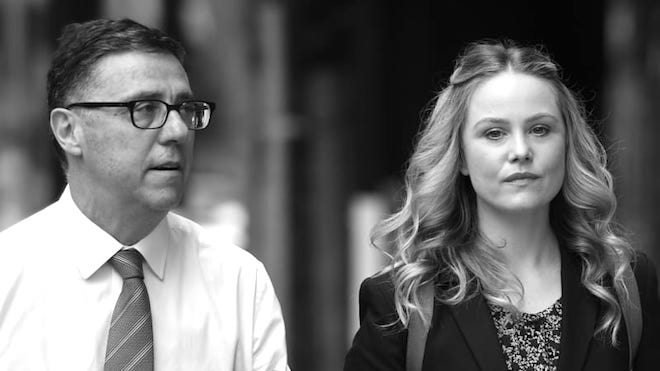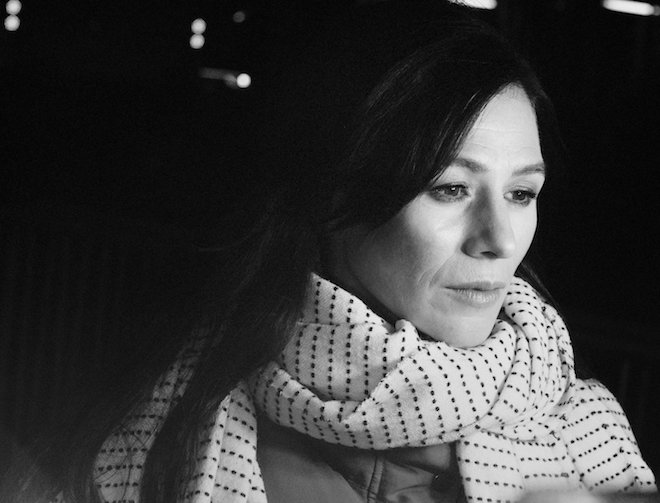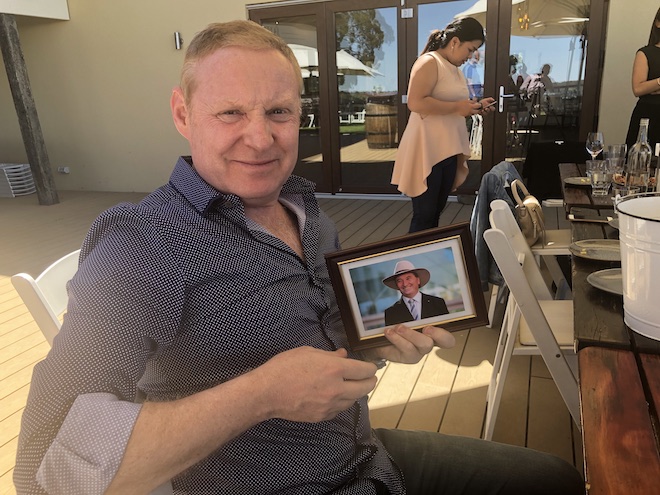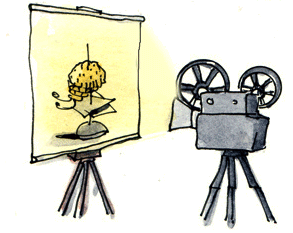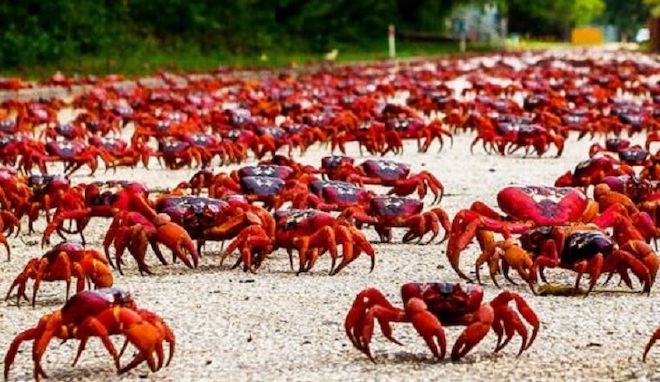Gayle v Fairfax ... Defamatorium ... Fair is foul and foul is fair ... Weighing the balance of a testing trial ... Analysis of judge's rulings
![]() Fair is foul and foul is fair
Fair is foul and foul is fair
THE Fairfax newspapers claimed they did not get a fair trial in the Chris Gayle defamation case.
On Monday October 30, the sixth day of the trial, the jury rejected Fairfax's defences of truth and qualified privilege and found that the articles about the big bash cricketer Gayle exposing himself to a team masseuse were published maliciously.
By accounts from those who followed the case it was a surprising verdict.
Gayle had pleaded that publications by Fairfax Media, The Age Company and Federal Capital Press gave rise to imputations that:
(a) He intentionally exposed his genitals to a woman in the West Indies team dressing room during a training session at the 2015 World Cup.
(b) He indecently propositioned a woman in the West Indies team dressing room during a training session at the 2015 World Cup.
(c) He indecently exposed himself to a woman in the West Indies team dressing room during a training session at the 2015 World Cup.
It took the jury of three women and one man less than two hours (including lunch) to find the defences failed for the ten articles published on various Fairfax platforms in January 2016 and had defamed the cricketer who was previously part of the West Indies team but now plays as a renegade.
Leanne Russell was the West Indies team masseur and she told her story to Age journalist Chloe Saltau that Gayle had partially exposed himself to her by lowering his towel in the change room.
Initially she came forward anonymously after Gayle's sleazy "don't blush baby" incident with Channel 10 sports reporter Mel McLaughlin, but for the trial decided she should speak publicly.
Trial judge Lucy McCallum said she was "troubled" by Fairfax's post-verdict statement:
"It seems to me to be a fairly clear criticism of the court published on the door step of the court immediately after the jury's verdict and I don't really know what to do about it. I think I should think about it and perhaps raise it with others."
Matt Collins QC for the defendants said:
"I really wish to say on the transcript the complaint is that there was an error made yesterday when the jury was not discharged. Of course a complaint that a judge has made an error is a criticism of a court, but only in the time honoured sense, and that is why we have appeal courts.
HH: "Yes, it is not why we have newspapers."
At the time of going to press, the parties were still waiting for McCallum J to release her summing up to the jury. Meanwhile, Gayle has announced he wants to sell his story about the Fairfax defamation case and said bidding was now open, starting at $Aus420,000.
And ...
But what of the claim by the defendants that they felt they had an unfair trial? In the course of any trial there will be decisions by the judge about which one side or the other will be unhappy.
To access the overall balance of the trial requires ploughing through seven days of transcript amounting to 459 pages and assessing the rulings, interruptions and directions by the trial judge - whether they be crucial or minor and inconsequential, whether they be well-founded.
For the defendants and their counsel Dr Matt Collins QC there were 51 statements, rulings and directions by the judge that could be classed as contentious or adverse and 12 that were positive or in their favour.
For the plaintiff and his counsel Bruce McClintock, we counted 11 interventions by the judge that were negative and 18 that were positive.
We'll outline some of them here to assist subscribers in their assessment of "fairness".
Judge's decisions, rulings and interruptions adverse to the defendants
Of the 51 instances were counted in the transcript these seem to be the most relevant:
• The judge's decision not to allow into evidence Gayle's social media posts and videos on YouTube.
• McCallum J upheld McClintock's objection to Collins on the way Gayle portrays himself publicly, saying: "This case is about the way in which he portrays himself privately in the change room, Dr Collins" (day one, page 59, line 50).
If the the social media posts had been admitted this is what the jury would have seen - (scroll down).
There was also some vibrant carnival activity on YouTube ...
And the famous condom advertisement ...
Among other things in Collins' cross-examination of Gayle, the judge:
• Disallowed the line of questioning relating to how the team masseuse Leanne Russell was treated by the West Indies team (day one, page 66, line 30).
• Refused a line of questioning in relation to Dwayne Smith's (Gayle's team mate and his chief witness) text to Ms Russell to organise a massage, saying it was a 'credit' question (day two, page 88, line 91).
• Prevented the line of questioning in relation to Smith's "sexy" text message sent to Ms Russell because it was an illegitimate 'credit' point (day two, page 99, line 101).
During cross-examination of Fairfax witnesses by McClintock, the judge:
• Pressed Age sports journalist Chloe Saltau as though she could be counsel for the plaintiff. A comparable series of pressing questions to McClintock's witnesses could not be found (day two, page 162, line 14).
• Prevented Collins from completing his objection in the following exchange (day three, page 201, line 10):
HH: Dr Collins, it's been indicated another question is going to be put.
Collins: I didn't get to the objection.
HH: There's no need to continue with the objection once the objection is withdrawn, that means you've won and you get to sit down.
Also:
• In the absence of the jury, the judge refuted Collins suggestion that an attack had been made on Ms Russell in the following exchange: (day three, page 210, line 50)
Collins: Your Honour, in respect of the justification defence, the credit is the central issue. Who is to be believed out of the evidence given by Mr Gayle and Mr Smith on the one hand, and this witness on the other. A ferocious attack is being made, has been made in open - - -
HH: No attack's been made at all, she hasn't been cross-examined, her cross-examination hasn't commenced.
Collins: The attack was open in this - and it's suggested that she - - -
HH: Dr Collins, please.
• During the examination of Ms Russell the judge stopped Collins from asking the team's masseuse about why she was horrified after the Mel McLaughlin interview. McCallum J said it was not relevant (day three, page 231, lines 5-15).
• The judge was in disfavour of mass media publishers that run articles produced under time pressure as it compromises the content: (day four, page 333, line 26).
"Maybe it is a reference to invisus [??] environment, maybe it is a reference to journalists being under pressure and having to get stories, I mean, it might cut the other way. They are probably all relevant considerations but the pressure of the deadline cuts both ways because it makes it even more important to be careful about content."
• The judge criticised the evidence of the journalists on the basis the exposure allegation was not put squarely to Gayle or his manager because they assumed his guilt: (day four, page 337, line 20):
"I must say, that was the difficulty I had with the evidence of some of the journalists because their response to that was, well, why do we need to tell him with specificity?"
• The judge interrupted Dr Collins five or six times in a single exchange during his submissions about why "reasonableness" is a requirement of qualified privilege was a matter for the jury. This contrasted with McClintock's uninterrupted submissions on the same matter (day four, page 338).
• The judge ultimately reversed her decision in an earlier case where she found that the jury should decide reasonableness (Daniels v State of NSW) and concluded that in Gayle reasonableness is a matter for the trial judge (day four, page 350, lines 15-30).
• The judge persistently interrupted Collins during his explanation in relation to his application to discharge the jury (day five, pages 398-405).
• There were further interruptions from the bench when Collins sought to rebut the judge's reasons for not discharging the jury. She said she is "not inviting further submissions [and is] not going to discharge the jury" (day six, page 430, line 40).
Later, she said (day six, page 431, lines 0-5):
"You don't get a second bite of the cherry to discharge the jury. I have considered your submission very closely. I'm not giving you a third go at that action."
• Collins was told by the judge that he put his argument "in a way that was confusing to me, and to Mr McClintock" (day six, page 432, line 15).
Judge's decisions and rulings positive to the defendants
![]() Collins: no second bite of the cherryWe counted 12 in all, but here are the most significant:
Collins: no second bite of the cherryWe counted 12 in all, but here are the most significant:
• The judge stated, in favour of Fairfax's argument, that public interest "must be a live issue in this case" (day one, page nine, line 16).
• The judge allowed Collins' line of questioning (and rejected McClintock's objection) about the contextual relationship between Leanne Russell and Gayle (day one, page 60, line 35).
• The judge allowed in evidence of Gayle's management's denial during examination of Fairfax sports reporter in Sydney Chris Barrett, and said she would give directions about it (day three, page 195, line 15).
• The judge allowed Collins to bring in 'background context' evidence when questioning Ms Russell in relation to how the massage with Dwayne Smith was organised (day three, page 213, line 30).
• The judge upheld Collins' objection to McClintock's question about what Ms Russell thought readers would think when reading the article (day three, page 259, line seven).
• The judge indicated support for Collins' argument that McClintock failed to amend some particulars. She said: "How could Dr Collins have pre-empted 11 points if you don't make the application to amend the particulars?" (day five, page 423, line 21).
• The judge said that she did not think that the journalists knew that the allegations were false (day seven, page three, line 50).
• The judge concluded that Fairfax's statement about not getting a fair trial did not relate to damages (day seven, page 10, line 45).
Judge's decisions and rulings adverse to the plaintiff's side
We counted 11 of them. Here are some:
• McCallum J disagreed with McClintock's assertion, in relation to the s.30 defence, that "there are references throughout the defences to the word 'court deciding' which doesn't really seem apposite to the jury deciding" (day one, page eight, line 25).
• When McClintock referred to the forensic IT expert as "my learned friend's expert", the judge said: "He's actually my expert, Mr McClintock, he's an expert appointed by the court but they might have found him, but I appointed him" (day one, page 78, line 50).
• The judge interrupted McClintock when he began making a submission on the question of 'reasonableness', stating (day three, page 183, line 40):
"Mr McClintock, I understood that submission. Please, I'm using it in shorthand, I understood your submission, the question is whether under the general law it was a question that was determined by the jury."
• The judge pushed back on a number of McClintock's assertions in relation to whether 'reasonableness' is a matter for the judge or jury (day three, pages 185-186).
• The judge said in relation to McClintock's question about Leanne Russell "calling a spade a spade": "Mr McClintock, I'm not sure that that's a very meaningful question." She then rejected his next question about whether Ms Russell is "a women prepared to use blunt language" (day three, page 260, line 40).
• The judge prevented McClintock from showing a text message to Ms Russell, saying: "I think she's already accepted it, Mr McClintock" (day three, page 282, line 38).
• The judge interrupted McClintock and corrected him on his reference to "balance of proof" rather than "burden of proof" (day four, page 369, line 35).
Judge's decisions and rulings in favour of the plaintiff
![]() McClintock: exactly, exactly your HonourWe counted 18 in this category. Here they are:
McClintock: exactly, exactly your HonourWe counted 18 in this category. Here they are:
• In relation to the judge's earlier decision in Daniels, the judge stated that she would "rethink this carefully", because of arguments raised by McClintock (day one, page four, line 10).
• The judge allowed McClintock to give an extensive view on the Mel McLaughlin interview as "a bit of background" - despite not putting any evidence forward in relation to it and despite him claiming it had no relevance (day one, page 25, line 50).
• McClintock was not pulled up or corrected when he gave his version of the definition of 'malice'. He claimed that there is "nothing hard in it [malice] ... it means that she [the journalist Chloe Saltau] published for an improper purpose, that is, for a purpose that we nominate is to harm my client". However, the definition of malice is not quite as simple as that - it requires the improper motive to be the dominant motive, not just a contributing motivating factor (day one, page 27, line 45).
• The judge allowed Gayle to talk about his charity work and for McClintock to ask a number of questions about his philanthropy (day one, page 32, lines 30-50).
• The judge articulated McClintock's argument for him when discussing the Mel McLaughlin interview. She completed McClintock's statement in the following exchange (day one, page 53, line 45):
McClintock: Not quite like that, your Honour, but your Honour will bear in mind that there is no similarity with what it said to have happened with Ms McLaughlin - - -
HH: Public flirting versus private exposure of genitals.
McClintock: Exactly. Exactly. Your Honour, I've said all I wish to say.
• In discussing whether 'reasonableness' was a matter for judge or jury, McClintock asked: "Is it possible to obtain the judgment that your Honour gave on Friday night?" (day one, page 76, line 45).
• The judge affirmed McClintock's objection to Collins' question of cricketer Dwayne Smith in relation to the text message sent to Leanne Russell to organise a massage. McCallum J and Collins extensively debated this point and the judge concluded by saying, "Mr McClintock, do you agree with my analysis?" - to which McClintock said: "Yes, Your Honour" (day two, page 91, line 40).
• The judge repeatedly allowed McClintock to cut off Fairfax journalist Chloe Saltau during her answers to his questions (day two, page 144, line 35; page 145, line 12; page 146, line 50; page 155, line five).
When Collins objected to McClintock consistently cutting off Fairfax journalist Ms Saltau, McCallum J stated (day two, page 155, line 15):
"I think Mr McClintock is entitled to press because he's dealing now with a question of capacity which I think wasn't included within the last answer, not that she's being non-responsive but it's just a different angle. Yes Mr McClintock?"
• The judge did not intervene when McClintock was probing Leanne Russell on her eating disorder, despite there being no clear relevance (day three, page 236, lines 25-50).
• McCallum finished McClintock's sentence for him when cross-examining Ms Russell (day three, page 246, line 40):
McClintock: I'm not criticising you for this, but it wasn't true, was it, you weren't looking - - -
HH: That you were looking for a towel.
McClintock: You weren't looking for a towel?
A: No, correct.
• On a few occasions, the judge pressed Ms Russell on a number of questions in furtherance of what McClintock was asking the witness (day three, page 268, line 15; page 273, line 20; page 281, lines 5-20).
• The judge rejected Collin's objection to McClintock's question and how it was put to Ms Russell (day three, page 275, line 12).
• McClintock requested from the judge that Collins outline the basis of his submission that 'reasonableness' is a matter for the jury - even though the burden lies with the plaintiff to make the submission. McCallum erred with McClintock and encouraged Collins to make a submission because it "would be helpful for everyone" (day four, page 301, line 50).
• The judge appeared to articulate and reinforce McClintock's arguments on McClintock's behalf in rebutting arguments put forward by Collins. For example, McCallum J stated (day five, page 411, line five):
"Mr McClintock's submission is that it doesn't have to be put at all, because he's entitled to draw an inference from the fact that the question was asked by you."
• The judge articulated McClintock's argument for him in stating why the jury should not be discharged:
"But two things might have unwittingly contributed to that impression in your [McClintock's] mind. They certainly did in mine. One is that, when that evidence was led from Ms Russell, Dr Collins asked did she hear anything."
![]() McCallum: It was a red herringIt seems McClintock did not make this argument or articulate this reasoning. McCallum J did (day six, pages 436, line 15).
McCallum: It was a red herringIt seems McClintock did not make this argument or articulate this reasoning. McCallum J did (day six, pages 436, line 15).
• The judge assisted McClintock to articulate his argument in the following passage (day six, pages 436-437):
McClintock: Two things were clear in my intent of that address, and the evidence. One was that, the laughing must have come from Ms Russell in some way because of the secrecy. The second thing, because, and it's sensible - I would only be repeating what your Honour said. The way my learned friend was dealing with the Clark [West Indies physio] issue was to say he had nothing to say.
HH: It was a red herring.
McClintock: A red herring, in effect, and he could not contribute.
HH: Except as evidence of the first complaint.
McClintock: Exactly. Exactly. Exactly.
HH: If he went into the change room and heard the laughter, and her evidence says she came out and stood outside the change room for a few minutes - - -
McClintock: Yes.
HH: - - - then went to speak to Mr Clark, then went up to the stand.
McClintock: Yes. Yes. Exactly.
HH: If she heard the laughter after a few minutes, you couldn't give a temporal connection of the exposure of the penis.
McClintock: Exactly, your Honour.
• McCallum outlined a number of reasons why she thinks there to have been 'malice' on the part of the defendants:
"Well, I am talking about all of those sort of matters and failure to find Mr Smith; failure to wait for a formal response from Mr Gayle or give him an opportunity to make one with more knowledge of what the allegation was; failure to wait for the email from Sir Ritchie [Richardson, team manager]; failure to obtain any confirmation from Sir Ritchie and so on. But I think I would take some persuading, Mr McClintock, that there was knowledge of falsity."
(day seven, page four, line 10).
The scorecard:
• Negative for Dr Collins and Fairfax: 51
• Positive for Dr Collins and Fairfax: 12
• Negative for Bruce McClintock and the plaintiff: 11
• Positive for Bruce McClintock and the plaintiff: 18
Of course, in the end, the jury made the decision.
Transcripts:
Monday Day 1 Oct 23
Tuesday Day 2 Oct 24
Wednesday Day 3 Oct 25
Thursday Day 4 Oct 26
Friday Day 5 Oct 27
Monday Day 6 Oct 30
Tuesday Day 7 Oct 31 (damages argument)
See also: Gazette of Law & Journalism reports of the trial
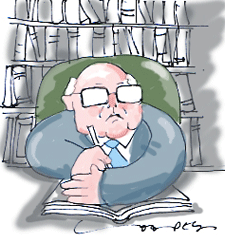 A quick note to advise on arrangements pertaining to my settling-in as High Commissioner to the Court of St James's.
A quick note to advise on arrangements pertaining to my settling-in as High Commissioner to the Court of St James's. 